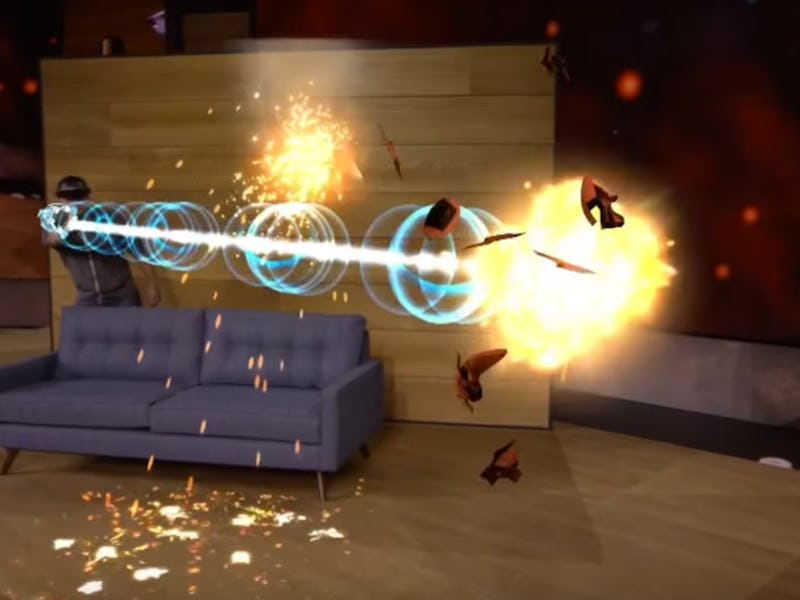Microsoft HoloLens Developers Show Early Potential of Augmented Reality
Can it turn promise into practice?

Now that Microsoft has turned its HoloLens virtual and augmented reality headset over to developers, the people who will make or break the device have begun figuring out what new capabilities it gives users. And in the very first series of marketing proposals released, it’s clear that developers are enjoying one aspect of HoloLens in particular: Augmented reality.
While virtual and augmented reality tend to get lopped together, they’re really different phenomenon. Oculus Rift, the Facebook-owned pioneer headset that officially launched last week, is only a virtual reality headset, meaning everything you see in the goggles is digital animation. It offers complete immersion in a world that is not real. Augmented reality works more like a very advanced Google Glass, allowing the user to peer at our actual reality but with digital alterations. HoloLens developers seem to be pretty excited about the possibilities for augmented reality not only as a gaming feature but for improving how we work as well.
Augmented reality allows HoloLens users to view digital life in real time without losing a grasp of the real world. One of the coolest games for HoloLens in the work takes advantage of augmented reality to cross Yu-Gi-Oh! with chess. Players summon crazy-looking monsters on a chessboard, and the creatures fight it out. They slash swords, eat alien flesh, and body slam each other until one side is victorious. (Reminiscent of a certain tabletop game from the Star Wars universe.) The highly detailed monsters stay planted on the board the whole time — but of course, with HoloLens, the characters could go anywhere and do anything.
The ultimate question for HoloLens will be whether developers run with the unique capabilities of the device, and at this point it does seem possible that they have hit on something real. With significant prompting from Microsoft itself, a wide range of interest has certainly developed. The technology enables young doctors and biology students to study a real 3D rendering of the human body and offers science fans a manageable tour of the galaxy.
The device is also at the heart of excitement from some industrial designers who are using the augmented reality feature to visualize designs in 3D before deciding to even build a prototype. Unlike virtual reality, HoloLens projects the designs into the middle of everyday office space and allows different people wearing headsets to access the same hologram.
Citibank is even building a program for HoloLens that allows its financial analysts to visualize information about the markets and share the data with potential customers to allow clearer, quicker planning and execution of trades. It is admittedly hard to tell whether the device would actually be useful or just make traders look like they know what they’re talking about. Either way, HoloLens would stand to gain a lot by becoming a kind of virtual Bloomberg terminal.
All of these prototypes show that Microsoft is beginning to close the developer gap that doomed its smartphones to obscurity. The Windows smartphone never stood a chance, despite its relative sophistication, once developers turned their back on it. But in fairness, HoloLens offers features that its competitors have neglected. If augmented reality gaming poses the kind of promise presaged in the earliest demos, it really shouldn’t be a competition down the road. Right now, Microsoft looks like the clear frontrunner to bring robot warfare into every home — literally.